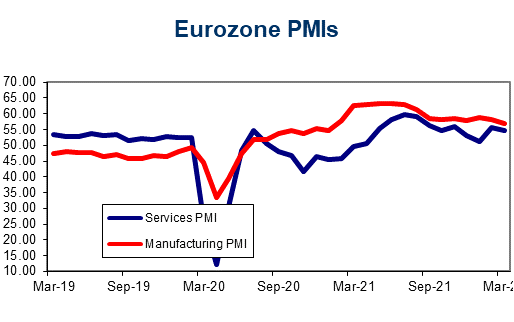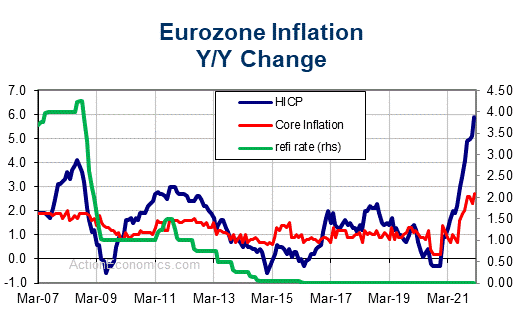It has become increasingly clear that the balance of risks remains firmly tilted to the downside for the Eurozone, despite the fact that European stock markets have been trending slightly higher since the start of the year, and German ZEW investor confidence improved again, while even today’s CPI reading along with Wednesday’s PMI for the Eurozone came in better than expected.
The German manufacturing sector has been hit hard by global trade tensions, Brexit uncertainties and of course the troubles in the auto industry. And while the emission scandal and tighter standards and regulations are not fully resolved, there were also threats from US President Trump on whether car imports pose a threat to national security, which could lead to severe tariff restrictions.
European data this week confirmed that car exports, in particular car exports to the US, remain the most important part of Germany’s record trade surplus. Meanwhile today, the German February Ifo came in weaker than expected at 103.4 and German Q4 GDP confirmed at 0.0% q/q.
The breakdown of both sectors showed that:
- Manufacturing confidence continues to deteriorate
- The service sector sentiment has fallen back, even if it remains stronger than the manufacturing number.
- Investment sector, but particularly public consumption propping up growth, with construction investment particularly buoyant and rising 1.3% q/q.
Overall there are still some positive signs, most notably the fact that investment is holding up, and the slight improvement in the domestic trade number. However, with construction investment remaining strong and interest rates lower for longer, this does not seem sufficient to offer much hope of a rebound in the German economy in the near future. Also there is the risk that the central bank’s very expansionary policy is laying the ground for a real estate bubble.
In the Eurozone meanwhile, the Eurozone current account surplus may have eased somewhat last year, but at 3% of GDP remains extremely high, which will also leave the EU vulnerable to the charge of focusing too much on exports and fostering unsustainable trade imbalances globally. All this means is that the ECB effectively missed the boat on further policy normalisation with rate hikes this year increasingly unlikely and in fact long priced out by the markets, even if current rate guidance does not rule out a move towards the end of the year.
All this means is that the ECB effectively missed the boat on further policy normalisation with rate hikes this year increasingly unlikely and in fact long priced out by the markets, even if current rate guidance does not rule out a move towards the end of the year.
For banks and insurers, then, it will remain a very challenging environment, as negative interest rates weigh on profits. This started to fret the central bankers about the possibility of funding shortages throughout the Eurozone. At the same time, TLTROs, cheap loans first launched during the financial crisis to ensure adequate lending conditions, are starting to mature. These Target Long Term Refinancing Operations are due to start maturing in 2020, but are likely to impact liquidity conditions across the Eurozone from as soon as the middle of this year, as banks need to have funding with maturity of at least one year to meet regulatory requirements.
Italian and Spanish banks in particular are thought to face challenges, as they continue to sit on a high number of non performing loans, while political situations in both countries are already affecting spreads. Spain is facing snap elections, while in Italy on the other hand, structural problems remain clearly evident as the economy seems to slide deeper into recession.


Comments from ECB’s Praet this week along with ECB minutes have pretty much laid the groundwork for the long awaited new round of cheap TLTRO funding, with fears that lending restrictions could hamper the transmission channel for monetary policy serving as the official justification for new loans. Praet warned that cautious lending could actually exacerbate the slowdown in the Eurozone economy.
Banks have higher liquidity buffers than previously, but stock market valuations have dropped markedly and at the same time profitability is low, according to the Executive Board Member, who stressed that the ECB has to monitor the effectiveness of monetary policy and the transmission channel.
The ECB’s updated staff projections are due at the March meeting and are likely to bring sizable downward revisions to growth projections, especially for Germany.
Against that background Praet didn’t mention TLTROs, but with the funding issues in mind, there is an incentive to act by June and make an announcement as soon as March to dampen the blow for Eurozone banks, which will have to cope with the negative interest rates environment longer than previously expected.
With regard to the structure of the loans, durations are likely to be shorter than previously and the targeted loans are widely expected to come with variable interest rates, to keep the ECB’s options open going forward as the outlook remains characterised mainly by a high level of uncertainty.
Given that there are not just downside risks, but also risks to the upside in the case that there is an amicable split between the EU and the UK after all and global trade tensions can be resolved through talks, the hawks at the ECB would not want to be tied down to fixed rate loans that offer little flexibility if and when rates go up.
Not everyone is convinced though that further liquidity is needed but still, it is Praet who gives the introduction on the overall situation and who issues recommendations, and where his vote will go is pretty clear after his comments this week.
Draghi, himself, has also tended to opt for the dovish side so far, so it seems increasingly likely that new funding will be announced in March, and he has at the very least made it very clear that is a serious option for the coming months.
It may give beleaguered banks some respite, but at the same time, the risk is of course that it will lay the ground for fresh imbalances. Meanwhile with real estate valuations already looking stretched in many centres in Germany and house price inflation very strong in several Eurozone countries, this is something national regulators need to keep a very close eye on to prevent a rerun of the previous debt crisis, which in many countries started as a real estate crash.
Click here to access the Economic Calendar
Andria Pichidi
Market Analyst
Disclaimer: This material is provided as a general marketing communication for information purposes only and does not constitute an independent investment research. Nothing in this communication contains, or should be considered as containing, an investment advice or an investment recommendation or a solicitation for the purpose of buying or selling of any financial instrument. All information provided is gathered from reputable sources and any information containing an indication of past performance is not a guarantee or reliable indicator of future performance. Users acknowledge that any investment in FX and CFDs products is characterized by a certain degree of uncertainty and that any investment of this nature involves a high level of risk for which the users are solely responsible and liable. We assume no liability for any loss arising from any investment made based on the information provided in this communication. This communication must not be reproduced or further distributed without our prior written permission.



















